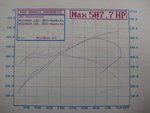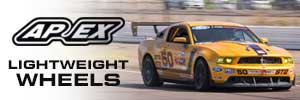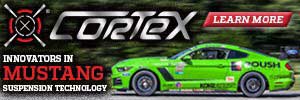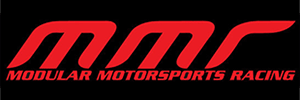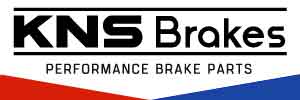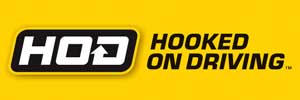- 349
- 0
"Jpc would like to announce that we have test results on our CNC cylinder heads for the 2011 5.0L. We have just completed the install/testing on the heads for MM&FF and have a sneak peek of the results. We are not at liberty to post up complete dyno sheets at this time but we can let you in on some of the gains we experienced. The car we used for testing was Joe Marini's 2011 6spd manual GT. The car was equipped with a set of Kooks longtubes, 3" Off-road X-pipe, Bassani mufflers, JLT CAI, and a custom Diablosport/JPC tune. The car baselined at 424rwhp, we installed the cyl heads within 24hrs and did not change anything but the cyl heads, we made sure all of our temperatures were consistent and this is what we found:
A 36rwhp gain at 7,400rpm, 21rwhp gain at peak hp which was 6400rpm, 18rwhp gain at 5,000rpm, 5rwhp gain at 4,000rpm. The heads feature RGR designed cnc porting and a 5angle valve job. They are equipped with stock valves and we shim the valve springs, for added valvetrain stability at high rpms. We will offer a cnc program that also includes camshaft area modifications/clearancing for larger camshaft profiles. This is a must for any camshafts over .500lift. We are currently accepting cores for porting and have an apprx 7 business day turn around time. Please contact us if you have any questions. Thanks JB@JPC
The MM&FF article should be on the newsstands in apprx 2 months.
I agree about the peak numbers that why we posted number from 4,000rpm and above. I can't divulge too much unfortunately. The one thing I'll say about the Coyote engine, and you'll probably hear it numerous times, is that as you add airflow through either cams, cyl heads or an intake manifold, you have to rev them to really benefit from the airflow gains.
From our cam testing, which we'll release #'s soon, to the cyl head testing, it seems as when we add airflow there are huge gains at the higher rpm range while the lower rpms stay very close to stock. Ford has optimized the airflow of these engines at the lower rpms and adding airflow=adding rpms.
The Mustang enthusiast is going to have to realize that the red line on your tachometer just means "keep going" after these items are installed. The Coyote engine will be very happy at 6,500rpm+ once all of the induction items are installed and it will love every minute of it. If 3,000rpm grunt is what the end user is looking for, install a Whipple.
Coyote Recipe=4.10's/4.30's+Longtubes w/full exhaust + tune + CAI + cnc heads + cams + Boss intake=apprx 475-500rwhp and a Helluva lot of fun!!!"
I cut out the most interesting part but here is the thread:
http://forums.corral.net/forums/showthread.php?t=1276618
Reading this it seems the head porting brought the peak power up to 445....this is with the stock intake manifold which I assume is the reason the car still peaked at 6400rpm. Imagine what happens with the Boss intake and better cams!
Of course who knows how Fords CNC job compares with what was done to this vehicle but I have a feeling Ford will prove to have done a really good job in this regard. We know for instance that the entire port and chamber is done from the factory. The valve job probably won't be as good but I bet that the overall flow numbers will be fairly close.
Gentlemen, we will have monsters on our hands with a few tweaks.
A 36rwhp gain at 7,400rpm, 21rwhp gain at peak hp which was 6400rpm, 18rwhp gain at 5,000rpm, 5rwhp gain at 4,000rpm. The heads feature RGR designed cnc porting and a 5angle valve job. They are equipped with stock valves and we shim the valve springs, for added valvetrain stability at high rpms. We will offer a cnc program that also includes camshaft area modifications/clearancing for larger camshaft profiles. This is a must for any camshafts over .500lift. We are currently accepting cores for porting and have an apprx 7 business day turn around time. Please contact us if you have any questions. Thanks JB@JPC
The MM&FF article should be on the newsstands in apprx 2 months.
I agree about the peak numbers that why we posted number from 4,000rpm and above. I can't divulge too much unfortunately. The one thing I'll say about the Coyote engine, and you'll probably hear it numerous times, is that as you add airflow through either cams, cyl heads or an intake manifold, you have to rev them to really benefit from the airflow gains.
From our cam testing, which we'll release #'s soon, to the cyl head testing, it seems as when we add airflow there are huge gains at the higher rpm range while the lower rpms stay very close to stock. Ford has optimized the airflow of these engines at the lower rpms and adding airflow=adding rpms.
The Mustang enthusiast is going to have to realize that the red line on your tachometer just means "keep going" after these items are installed. The Coyote engine will be very happy at 6,500rpm+ once all of the induction items are installed and it will love every minute of it. If 3,000rpm grunt is what the end user is looking for, install a Whipple.
Coyote Recipe=4.10's/4.30's+Longtubes w/full exhaust + tune + CAI + cnc heads + cams + Boss intake=apprx 475-500rwhp and a Helluva lot of fun!!!"
I cut out the most interesting part but here is the thread:
http://forums.corral.net/forums/showthread.php?t=1276618
Reading this it seems the head porting brought the peak power up to 445....this is with the stock intake manifold which I assume is the reason the car still peaked at 6400rpm. Imagine what happens with the Boss intake and better cams!
Of course who knows how Fords CNC job compares with what was done to this vehicle but I have a feeling Ford will prove to have done a really good job in this regard. We know for instance that the entire port and chamber is done from the factory. The valve job probably won't be as good but I bet that the overall flow numbers will be fairly close.
Gentlemen, we will have monsters on our hands with a few tweaks.
